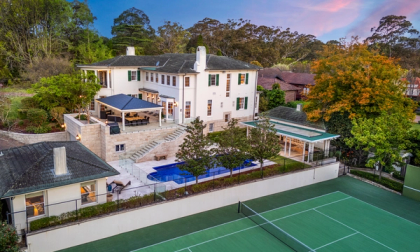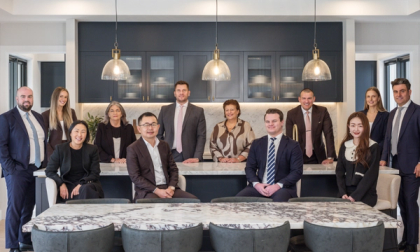
What will buyers pay more for post COVID-19 in the Mosman area
Of the many by-products of the COVID-19 era, for many of us it has been the amount of time we’ve spent reacquainting ourselves with our homes. Not just the endless gazing at ceilings that need a lick of paint, lockdowns and limited travel forced us to ponder what the “new normal” of domestic design will look like.
By pushing our dwellings to their extremes as temporary offices, schools, play centres and gyms, forecasters point to a cultural shift away from thinking of our homes as just another asset. That means less talk of over-capitalisation and new enthusiasm for investing in the home as a hub. Creating a versatile space that fits with the uncertain world we live in, an oasis that shelters us through tough times. With the forced road-testing of our abodes hopefully drawing to an end, patterns are emerging about the shape of the home of the future. We take a look at some of those trends.
The home office You don’t need to have experienced a work virtual meeting with a screaming toddler in the background to appreciate the appetite for private home offices. The pandemic shifted work patterns, recalibrating both employers and employees to be more comfortable working from home. There’s no turning back, even big business keen to have staff back in a traditional office have come around to the benefits of some work from anywhere time. So, what will these new home offices look like? The dining room table isn’t going to cut it. Designers report an uptake in repurposing garden sheds and garages into home offices. Spare bedrooms are being multi-purposed, with an uptake in modular and foldaway built-in desks. In Brazil, an architectural practice has even fashioned a turf-roofed sunken home office that’ll squeeze into a backyard without eating into space. Expect home offices to continue to climb design wish lists.
Technology With all those home offices popping up, there is a need for technology to go with them. Multiple Wi-Fi ports and remotely control technology to run everything from lighting to air-conditioning. Wired homes will let your computer or phone talk with home entertainment systems and the fridge or oven. And while we’re at it, wire in the new solar panels. Future-proofing has seen an uptake in green technology like solar, and households installing electric car charging stations. Even in homes that don’t currently own an electric car.
The future of the garage With the growth of home gyms one of the beneficiaries of pandemic living, not everyone has space for one. Or do they? New ranges of fold-away gyms have hit the market, squeezing into corners and folding into walls. And there’s been a boom in cycling and bike sales. Where do you store them? Ceiling-mounted bike racks. And what does this mean for design? In this new multi-purpose world, cars are going to have to share space.
New floor layout Expect plenty of mobile wall partitions, wider hallways and bigger bathrooms. Future-proofing is one of the big buzzwords of COVID-era home design. Houses you can comfortably age in and get around easily in with any unforeseen future mobility issues. With the high cost of housing, social forecasters predict a boom in flexible housing which can be re-configured for adult children to stay longer or grand-parents to move in. Today’s rumpus or media room might be tomorrow’s self-contained space, so include a small bathroom and kitchenette in the plans.
A new experience Resort style and holiday vibe are just a couple of emerging design buzzwords. As homeowners emerge from lockdowns, they want more from their dwelling. That can mean different things to different people. Someone in search of serenity might covet indoor plants or a greenhouse, while an international travel ban could leave a family finally ready to invest in that infinity pool and cabana. The design choice will often follow a lingering emotion. If health is top of mind, a sauna or pilates room might be on the wish list, if it’s exercise and room isn’t an issue, perhaps a tennis court. Or maybe it’s an outdoor entertaining space that functions like another room to the home. It comes down to personal choice, but the events of the past few years have changed priorities, and our homes will inevitably change with them.
Was this content helpful to you?





